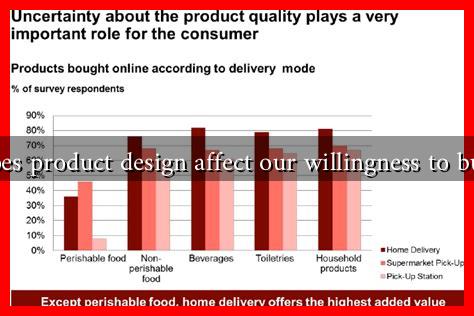-
Table of Contents
Does Product Design Affect Our Willingness to Buy?
In today’s competitive marketplace, product design plays a crucial role in influencing consumer behavior. From the sleek lines of a smartphone to the intuitive layout of a website, design can significantly impact our willingness to purchase. This article explores how product design affects consumer decisions, supported by examples, case studies, and statistics.
The Psychology of Design
Product design is not just about aesthetics; it encompasses functionality, usability, and emotional appeal. The psychology behind design suggests that consumers often make purchasing decisions based on their emotional responses to a product. According to a study by the Nielsen Norman Group, 94% of first impressions are design-related, highlighting the importance of visual appeal in attracting customers.
Key Elements of Effective Product Design
Several key elements contribute to effective product design that can enhance consumer willingness to buy:
- Aesthetics: The visual appeal of a product can create an emotional connection with consumers. For instance, Apple’s minimalist design philosophy has cultivated a loyal customer base.
- Functionality: A product must not only look good but also perform well. The usability of a product can significantly affect customer satisfaction and repeat purchases.
- Brand Identity: Consistent design elements that reflect a brand’s identity can foster trust and recognition. Companies like Coca-Cola and Nike have successfully used design to reinforce their brand image.
- Packaging: The packaging of a product can influence purchasing decisions. Research shows that 72% of consumers say that packaging design influences their buying decisions.
Case Studies: Successful Product Design
Several companies have successfully leveraged product design to boost sales and enhance customer loyalty:
- Apple: Apple’s focus on sleek, user-friendly design has made its products highly desirable. The iPhone’s design, with its smooth edges and intuitive interface, has set industry standards and created a cult-like following.
- Dyson: Dyson’s innovative vacuum cleaners and hand dryers are not only functional but also visually striking. Their unique designs have positioned them as premium products, allowing the company to command higher prices.
- Airbnb: The design of Airbnb’s website and app emphasizes user experience, making it easy for users to navigate and book accommodations. This focus on design has contributed to its rapid growth in the travel industry.
The Role of User Experience (UX)
User experience (UX) is a critical aspect of product design that directly impacts consumer willingness to buy. A positive UX can lead to higher conversion rates and customer satisfaction. According to a report by Forbes, companies that prioritize UX see an average increase in revenue of 37%. Key components of UX include:
- Intuitive Navigation: Users are more likely to purchase from websites and apps that are easy to navigate.
- Responsive Design: A product that works seamlessly across devices enhances user satisfaction.
- Feedback Mechanisms: Providing users with feedback during their interaction with a product can improve their overall experience.
Conclusion: The Bottom Line
In conclusion, product design significantly affects our willingness to buy. A well-designed product not only attracts consumers but also enhances their overall experience, leading to increased sales and brand loyalty. Companies that invest in effective design strategies can differentiate themselves in a crowded marketplace and foster lasting relationships with their customers. As consumer preferences continue to evolve, the importance of product design will only grow, making it a critical factor for businesses aiming for success.

